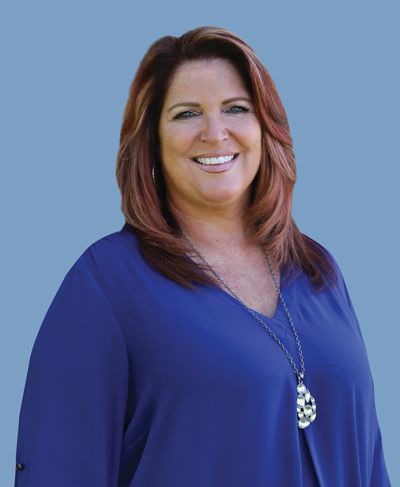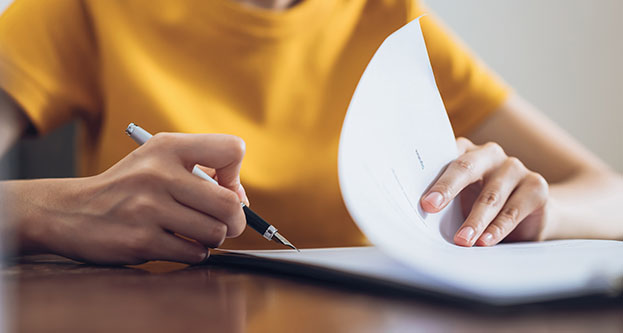Loans: Which lending options make sense for your needs?
Loans are a great way to help you meet your financial and life goals, like buying a new car, renovating your kitchen or paying off lingering credit card debt—talk to ACU about how to get a personal loan to help you out.
Not all lending options are created equal — and the type of loan, payment schedule and interest rate will depend on a number of factors, from your specific borrowing needs to your credit score.
Lending and borrowing basics

Nowadays, a lot of people come in asking for a line of credit when it’s not always what they need,” says ACU Branch Manager Traci Thomas, who heads up the Tuxedo location.
If members want a line of credit to pay down debt, for example, it might make sense if it’s tied to their mortgage, since it will have a lower interest rate. But for someone who’s struggling to make ends meet, Traci advises a term loan with a fixed rate could potentially be a better option.
Many people, however, don’t understand the difference. So if you’ve never borrowed money — or only rarely — it’s important to understand the different types of loans available, and what makes the most sense for your needs.
Loans 101
First off, there are two categories of loans: open-end credit and closed-end credit. Here are the borrowing basics for each category.

Open-end credit, or revolving credit, is used for day-to-day purchases but doesn’t have a fixed number of payments. Credit cards, home equity loans and lines of credit fall into this category.
Closed-end credit, or instalment loans, are typically used to finance larger purchases that you know you’ll need time to repay (such as a mortgage). This type of loan is typically paid back with interest over a fixed period of time.
There are four common loan types:
1. Personal loan: This is a closed-end, fixed-rate loan, which is suited for purchasing a big-ticket item such as a car. You start paying interest from the day the loan is advanced, and the fixed rate means you pay the same interest rate over the period of the loan.
2. Consolidation loan: This type of loan consolidates several outstanding debts. (Say, for example, you’ve racked up debt on multiple credit cards with high interest rates). This loan would pay off those outstanding debts, so you’d only have to pay back the consolidation loan — usually with a much lower interest rate. This simplifies the repayment process and can save money in the long run, while helping you regain control over your finances.
3. Secured vs. unsecured: These types of loans can provide an opportunity to access funds to help out with life’s necessities. A loan is ‘secured’ using your personal assets as collateral, which provides security to the lender. You might want to consider a secured loan to make a major purchase, such as a new home or car (where the home or car is the collateral). This type of loan provides a lower payment spread over a longer period of time.
Even if you don’t have collateral, an unsecured loan could be an option if you need funds for a major expenditure, such as home renovations or post-secondary education. An unsecured loan typically has a higher interest rate than a secured loan, but your credit score will help determine the terms of the loan (a higher credit score generally results in more favourable terms).
4. Line of credit: As a form of revolving credit, a line of credit gives you access to a pre-set borrowing limit, which you borrow as needed. “If you need the money for something like a home renovation, we would direct you to revolving credit, such as a line of credit, because you’re only charged interest if you use it,” explains Traci. “You might start with hanging drywall, but you’re not buying major appliances until down the road, so a line of credit makes more sense than a personal loan.”
Other loan types
RRSP loans allow you to borrow money to directly contribute to an RRSP. This is useful if you have a lot of RRSP contribution room and want to beef up your retirement savings while also reducing your taxable income. It could be an attractive option to people in their 20s and 30s who will benefit from the power of compounding interest over several decades, or to those in a higher tax bracket who are looking for a significant income tax deduction.
HELOCs: A HELOC, or home equity line of credit, is a secured form of credit that uses your house as collateral. As an alternative to mortgage refinancing, it provides revolving credit (similar to a credit card), so once you pay off an amount, it becomes available again. You can use the money however you’d like, and the payment schedule is flexible—you can make minimum payments, larger payments, or pay it off in full whenever you wish. At ACU, we call this our Home Advantage Plan Mortgage.
Terms and rates
A personal loan has a fixed payment rate, typically over a four-year term (though it can be longer in some cases). To note, not everyone receives the same interest rate, as there will be slight variations depending on the lender’s exposure to risk.

Some items to consider when it comes to terms and rates include:
- A secured loan typically offers a lower rate.
- Using cash as collateral offers an even lower rate than using a car as collateral.
- Unsecured loans will come with a higher rate.
With a line of credit, borrowers pay a certain percentage of the balance owing as a minimum payment each month, like a credit card. Usually, lines of credit feature a variable rate because of their ‘floating’ nature.
Related: Credit cards vs. loans: Which is a better way to borrow?

Credit ratings
Your credit score and repayment history also affect the type of loan you’re eligible to receive.
“People, especially young people without a lot of assets, should be aware of their credit bureau score, which provides insight into previous behaviour and how they’ve paid back credit in the past,” explains Traci. That’s because a low credit score can inhibit your ability to borrow in the future.
You can safeguard your credit score by limiting the amount of credit you use and making regular loan payments. It can also help to have a mix of credit, which could include a credit card, a mortgage and a line of credit or personal loan, for example.
Taking out a loan can help to improve your credit score (so long as you make on-time payments). If you’ve never borrowed money, it’s harder for lenders to get an idea of your creditworthiness. That’s why your score might actually be on the low side even if you’ve never or seldom borrowed money.
How to get a personal loan that’s right for you
As a golden rule, use credit as you intended when qualifying. It can be tempting to take on extra debt, for whatever purpose, but only do this if you need to.
Traci offers this advice when it comes to borrowing extra money: “It’s not a great idea to use all your credit because it negatively impacts your credit score. You don’t want to overextend yourself.”
By following this lending advice, you’ll be able to access additional lending options when you want to make purchases in the future.
If you’re interested in learning which borrowing options are best suited to your unique financial position, set up an appointment to speak with an ACU financial advisor today.
Up Next
Celebrating the 10th anniversary of student-run credit union
Just over 10 years ago, a survey circulated at Winnipeg’s Technical Vocational High School. The results showed that students at the school, commonly known as Tec Voc, felt short-changed—they were…
Kilter Brewing Co. serves up craft beer and community connection in St. Boniface
Deep in the heart of St. Boniface, Kilter Brewing Company is a hidden treasure—an oasis for Winnipeggers to escape their day-to-day routines, enjoy craft beer and connect with their community….
How to use a mortgage calculator to budget better
Learn how to use ACU’s mortgage calculator to figure out how much mortgage you can afford, and what budget you should set before you start house hunting. A mortgage lender…





